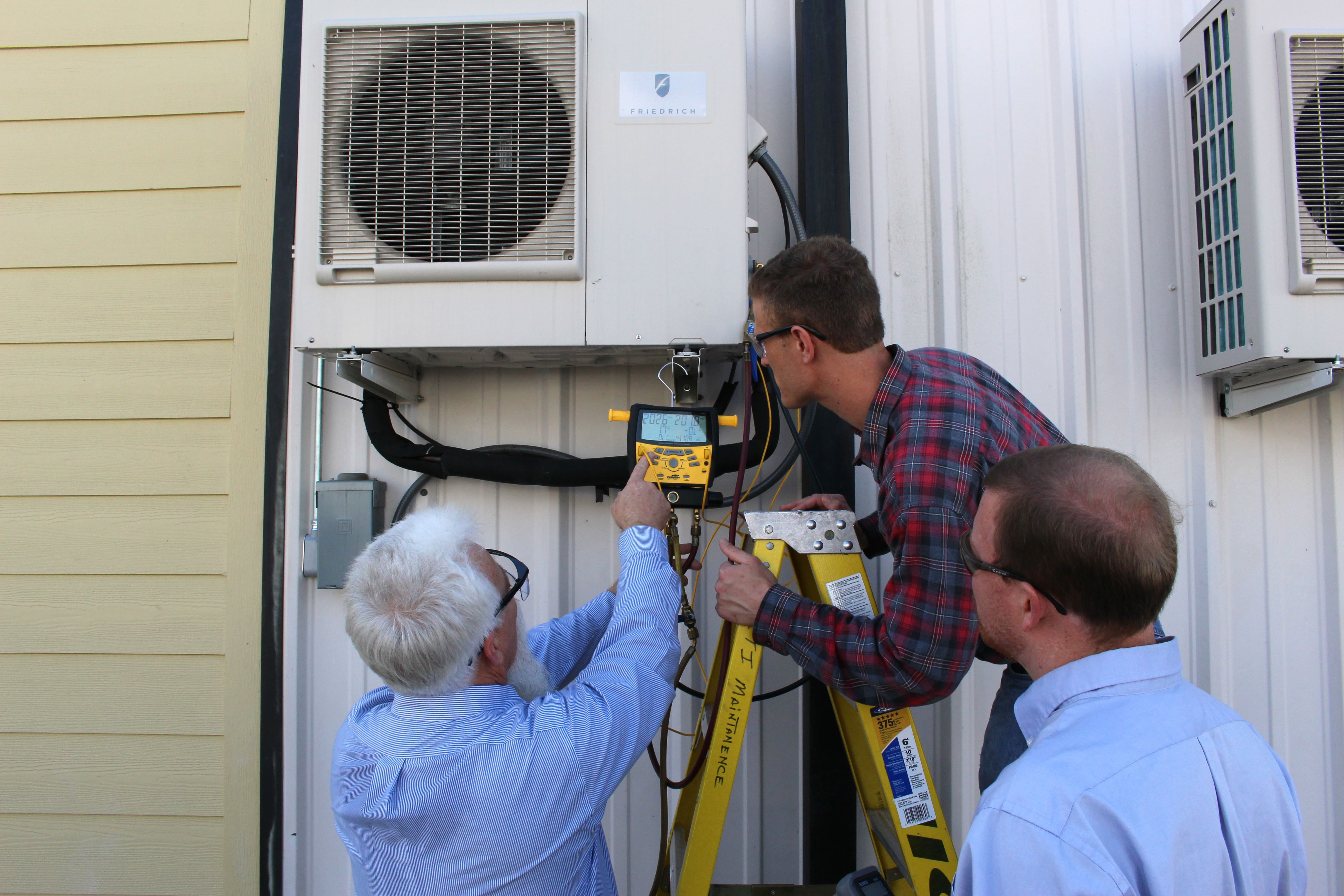If you’re interested in a career in the HVAC industry, then you’re going to need the right training and certifications to make you competitive in the job market. According to BLS.gov, there are currently 292,000 registered HVAC technicians in the United States, and the industry is renowned for stability and regular growth. If you’re considering a course at ITI Technical College, then it can be helpful to learn about some of the jobs that technicians often face in the field. One of the many faults that you’ll learn about at heating and ventilation school, is ice buildup on a condenser unit.
Let’s take a look at what causes this, and some of the methods that technicians use to prevent and correct this problem.
Condenser Ice Buildup – What is the Cause?
 An air conditioning or refrigeration unit won’t be able to reach peak efficiency when ice buildup occurs. Furthermore, if the fault is ignored, then damage can be caused to the entire unit.
An air conditioning or refrigeration unit won’t be able to reach peak efficiency when ice buildup occurs. Furthermore, if the fault is ignored, then damage can be caused to the entire unit.
During AC repair training, you will learn that insufficient airflow can be a leading cause of ice buildup on a condenser. When filters on an air conditioner unit are dirty and clogged, air won’t be able to efficiently move over the coil. This is a problem that is common on indoor coils and it will eventually lead to ice buildup. Owners of the unit may not immediately notice the icing problem, but they will notice that their unit is no longer performing as efficiently or cooling like it was when it was first installed.
Refrigerant gases, perhaps the most critical element of any heating or cooling system, can also be the cause of ice buildup within a condenser unit. If the unit is low on refrigerant gas, the unit will not be able to efficiently perform its process of heat exchange, which contributes directly to the ice buildup. In most units, the refrigerant gasses will deplete over time, however, once in the field you will find that a leak can also be the cause of low refrigerant.
Learning to Repair the Issues in AC Repair Training
 Although the above two issues are common causes of ice buildup, there may be other issues that are contributing to the problem. A faulty thermostat or controller, or a system that is not suited to the size of the premises can also cause ice buildup. With ITI Technical College, you will learn in-depth troubleshooting methods that will allow you to identify exactly where a fault lies. Powering down, defrosting, and cleaning a heating or cooling unit will allow for the removal of any built up ice, after which repairs can be made. These repairs could be maintenance related, such as cleaning the air flow components of a machine or replacing refrigerant gas, or, they may require that specific components are tested and replaced.
Although the above two issues are common causes of ice buildup, there may be other issues that are contributing to the problem. A faulty thermostat or controller, or a system that is not suited to the size of the premises can also cause ice buildup. With ITI Technical College, you will learn in-depth troubleshooting methods that will allow you to identify exactly where a fault lies. Powering down, defrosting, and cleaning a heating or cooling unit will allow for the removal of any built up ice, after which repairs can be made. These repairs could be maintenance related, such as cleaning the air flow components of a machine or replacing refrigerant gas, or, they may require that specific components are tested and replaced.
Without experience, it can be almost impossible to determine the cause of a fault, which is why certification and a comprehensive heating and ventilation training course is so important. ITI College will be able to provide you with the technical knowledge and practical experience to tackle problems on anything from a relatively small home split type air conditioner, to a large industrial or commercial HVAC installation.
Choosing the Right AC Service School
When you want to begin HVAC training, it’s important that you choose a school that provides the right instructional courses, while also remaining affordable. ITI teaches theory and practical experience based courses, with educators who have experience and extensive knowledge of the HVAC industry. Perhaps most importantly, the accredited courses remain affordable, so that you can have the smoothest pathway towards your new career.
Talk to us today to discuss course requirements and enrolment, and we’ll help you to find the best solution that takes you towards your career goals.
For more information about graduation rates, the median debt of students who completed the program, and other important information, please visit our website: https://iticollege.edu/disclosures/

